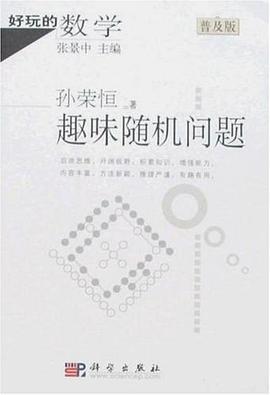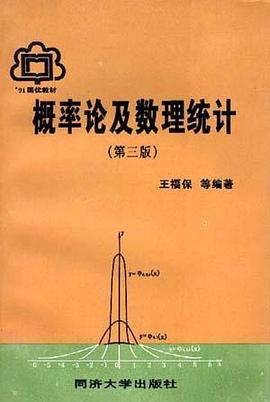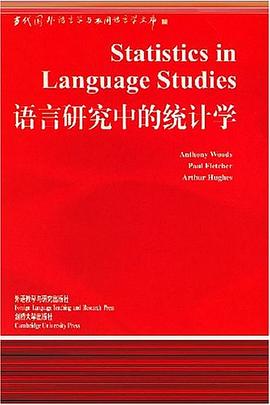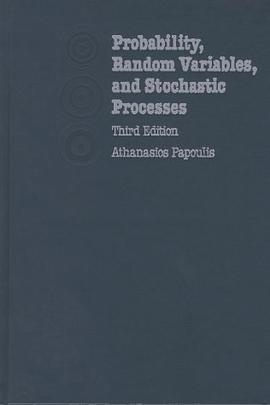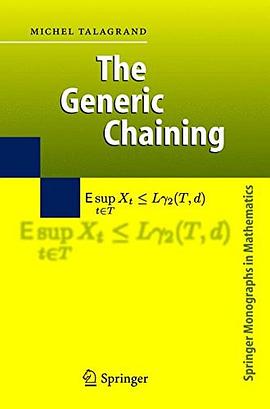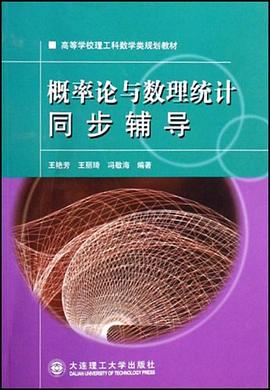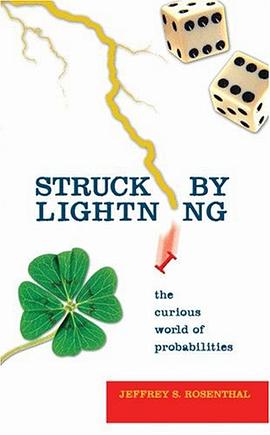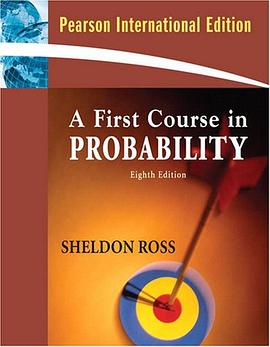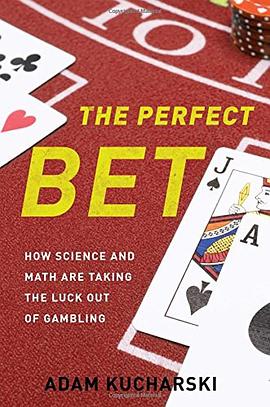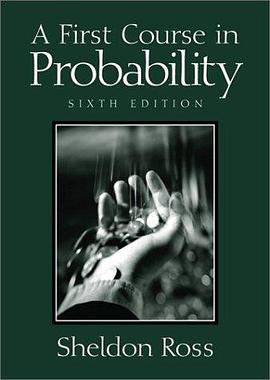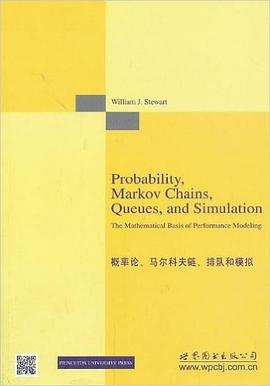

具體描述
斯圖爾特著的《概率論馬爾科夫鏈排隊和模擬》是一部講述如何挖掘蘊藏在模型錶現形式背後的數學過程的權威作品。詳細的數學推導和大量圖例使得更加易於研究生和高年級本科生作為學習隨機過程的教材和參考資料。本書應用廣泛,也適用於計算科學、工程、運籌學、統計和數學等學科。
著者簡介
圖書目錄
Ⅰ PROBABILITY
1 Probability
1.1 Trials, Sample Spaces, and Events
1.2 Probability Axioms and Probability Space
1.3 Conditional Probability
1.4 Independent Events
1.5 Law of Total Probability
1.6 Bayes' Rule
1.7 Exercises
2 Combinatorics-The Art of Counting
2.1 Permutations
2.2 Permutations with Replacements
2.3 Permutations without Replacement
2.4 Combinations without Replacement
2.5 Combinations with Replacements
2.6 Bernoulli (Independent) Trials
2.7 Exercises
3 Random Variables and Distribution Functions
3.1 Discrete and Continuous Random Variables
3.2 The Probability Mass Function for a Discrete Random Variable
3.3 The Cumulative Distribution Function
3.4 The Probability Density Function for a Continuous Random Variable
3.5 Functions of a Random Variable
3.6 Conditioned Random Variables
3.7 Exercises
4 Joint and Conditional Distributions
4.1 Joint Distributions
4.2 Joint Cumulative Distribution Functions
4.3 Joint Probability Mass Functions
4.4 Joint Probability Density Functions
4.5 Conditional Distributions
4.6 Convolutions and the Sum of Two Random Variables
4.7 Exercises
5 Expectations and More
5.1 Definitions
5.2 Expectation of Functions and Joint Random Variables
5.3 Probability Generating Functions for Discrete Random Variables
5.4 Moment Generating Functions
5.5 Maxima and Minima of Independent Random Variables
5.6 Exercises
6 Discrete Distribution Functions
6.1 The Discrete Uniform Distribution
6.2 The Bernoulli Distribution
6.3 The Binomial Distribution
6.4 Geometric and Negative Binomial Distributions
6.5 The Poisson Distribution
6.6 The Hypergeometric Distribution
6.7 The Multinomial Distribution
6.8 Exercises
Continuous Distribution Functions
7.1 The Uniform Distribution
7.2 The Exponential Distribution
7.3 The Normal or Gaussian Distribution
7.4 The Gamma Distribution
7.5 Reliability Modeling and the Weibull Distribution
7.6 Phase-Type Distributions
7.6.1 The Erlang-2 Distribution
7.6.2 The Erlang-r Distribution
7.6.3 The Hypoexponential Distribution
7.6.4 The Hyperexponential Distribution
7.6.5 The Coxian Distribution
7.6.6 General Phase-Type Distributions
7.6.7 Fitting Phase-Type Distributions to Means and Variances
7.7 Exercises
8 Bounds and Limit Theorems
8.1 The Markov Inequality
8.2 The Chebychev Inequality
8.3 The Chernoff Bound
8.4 The Laws of Large Numbers
8.5 The Central Limit Theorem
8.6 Exercises
Ⅱ MARKOV CHAINS
9 Discrete- and Continuous-Time Markov Chains
9.1 Stochastic Processes and Markov Chains
9.2 Discrete-Time Markov Chains: Definitions
9.3 The Chapman-Kolmogorov Equations
9.4 Classification of States
9.5 Irreducibility
9.6 The Potential, Fundamental, and Reachability Matrices
9.6.1 Potential and Fundamental Matrices and Mean Time to Absorption
9.6.2 The Reachability Matrix and Absorption Probabilities
9.7 Random Walk Problems
9.8 Probability Distributions
9.9 Reversibility
9.10 Continuous-Time Markov Chains
9.10.1 Transition Probabilities and Transition Rates
9.10.2 The Chapman-Kolmogorov Equations
9.10.3 The Embedded Markov Chain and State Properties
9.10.4 Probability Distributions
9.10.5 Reversibility
9.11 Semi-Markov Processes
9.12 Renewal Processes
9.13 Exercises
10 Numerical Solution of Markov Chains
10.1 Introduction
10.1.1 Setting the Stage
10.1.2 Stochastic Matrices
10.1.3 The Effect of Discretization
10.2 Direct Methods for Stationary Distributions
10.2.1 Iterative versus Direct Solution Methods
10.2.2 Gaussian Elimination and LU Factorizattons
10.3 Basic Iterative Methods for Stationary Distributions
10.3.1 The Power Method
10.3.2 The Iterative Methods of Jacobi and Gauss-Seidel
10.3.3 The Method of Successive Overrelaxation
10.3.4 Data Structures for Large Sparse Matrices
10.3.5 Initial Approximations, Normalization, and Convergence
10.4 Block Iterative Methods
10.5 Decomposition and Aggregation Methods
10.6 The Matrix Geometric/Analytic Methods for Structured Markov Chains
10.6.1 The Quasi-Birth-Death Case
10.6.2 Block Lower Hessenberg Markov Chains
10.6.3 Block Upper Hessenberg Markov Chains
10.7 Transient Distributions
10.7.1 Matrix Scaling and Powering Methods for Small State Spaces
10.7.2 The Uniformization Method for Large State Spaces
10.7.3 Ordinary Differential Equation Solvers
10.8 Exercises
Ⅲ QUEUEING MODELS
11 Elementary Queueing Theory
11.1 Introduction and Basic Definitions
11.1.1 Arrivals and Service
11.1.2 Scheduling Disciplines
11.1.3 Kendall's Notation
11.1.4 Graphical Representations of Queues
11.1.5 Performance Measures--Measures of Effectiveness
11.1.6 Little's Law
11.2 Birth-Death Processes: The M/M/I Queue
11.2.1 Description and Steady-State Solution
11.2.2 Performance Measures
11,2.3 Transient Behavior
11.3 General Birth-Death Processes
11,3. I Derivation of the State Equations
11.3.2 Steady-State Solution
11.4 Multiserver Systems
11.4.1 The M/M/c Queue
11.4.2 The M/M/∞ Queue
11.5 Finite-Capacity Systems--The M/M/1/K Queue
11.6 Multiserver, Finite-Capacity Systems--The M/M/c/K Queue
11.7 Finite-Source Systems-The M/M/c//M Queue
11.8 State-Dependent Service
11.9 Exercises
12 Queues with Phase-Type Laws: Neuts' Matrix-Geometric Method
12.1 The Erlang-r Service Model--The M/Er/l Queue
12.2 The Erlang-r Arrival Model-The Er/M/] Queue
12.3 The M/H2/1 and H2/M/1 Queues
12.4 Automating the Analysis of Single-Server Phase-Type Queues
12.5 The H2/E3/1 Queue and General Ph/Ph/1 Queues
12.6 Stability Results for Ph/Ph/l Queues
12.7 Performance Measures for Ph/Ph/1 Queues
12.8 Matlab code for Ph/Ph/1 Queues
12.9 Exercises
13 The z-Transform Approach to Solving Markovian Queues
13.1 The z-Transform
13.2 The Inversion Process
13.3 Solving Markovian Queues using z-Transforms
13.3.1 The z-Transform Procedure
13.3.2 The M/M/1 Queue Solved using z-Transforms
13.3.3 The M/M/1 Queue with Arrivals in Pairs
13.3.4 The M/Er/1 Queue Solved using z-Transforms
13.3.5 The Er/M/1 Queue Solved using z-Transforms
13.3.6 Bulk Queueing Systems
13.4 Exercises
14 The M/G/1 and G/M/1 Queues
14.1 Introduction to the M/G/1 Queue
14.2 Solution via an Embedded Markov Chain
14.3 Performance Measures for the M/G/1 Queue
14.3.1 The Pollaczek-Khintchine Mean Value Formula
14.3.2 The Pollaczek-Khintchine Transform Equations
14.4 The M/G/1 Residual Time: Remaining Service Time
14.5 The M/G/1 Busy Period
14.6 Priority Scheduling
14.6.1 M/M/1: Priority Queue with Two Customer Classes
14.6.2 M/G/1: Nonpreemptive Priority Scheduling
……
Ⅳ SIMULATION
Appendix A: The Greek Alphabet
Appendix B: Elements of Linear Algebra
Bibliography
Index
· · · · · · (收起)
讀後感
評分
評分
評分
評分
用戶評價
副標題是性能評價的數學模型。書看起來很厚,大概翻瞭下,內容比較基礎,也比較詳細,適閤工科生學習,裏麵有matlab和java代碼。對於瞭解馬爾科夫鏈和排隊論的基礎概念有幫助。做計算機和網絡性能評價的會用到。
评分副標題是性能評價的數學模型。書看起來很厚,大概翻瞭下,內容比較基礎,也比較詳細,適閤工科生學習,裏麵有matlab和java代碼。對於瞭解馬爾科夫鏈和排隊論的基礎概念有幫助。做計算機和網絡性能評價的會用到。
评分副標題是性能評價的數學模型。書看起來很厚,大概翻瞭下,內容比較基礎,也比較詳細,適閤工科生學習,裏麵有matlab和java代碼。對於瞭解馬爾科夫鏈和排隊論的基礎概念有幫助。做計算機和網絡性能評價的會用到。
评分副標題是性能評價的數學模型。書看起來很厚,大概翻瞭下,內容比較基礎,也比較詳細,適閤工科生學習,裏麵有matlab和java代碼。對於瞭解馬爾科夫鏈和排隊論的基礎概念有幫助。做計算機和網絡性能評價的會用到。
评分副標題是性能評價的數學模型。書看起來很厚,大概翻瞭下,內容比較基礎,也比較詳細,適閤工科生學習,裏麵有matlab和java代碼。對於瞭解馬爾科夫鏈和排隊論的基礎概念有幫助。做計算機和網絡性能評價的會用到。
相關圖書
本站所有內容均為互聯網搜索引擎提供的公開搜索信息,本站不存儲任何數據與內容,任何內容與數據均與本站無關,如有需要請聯繫相關搜索引擎包括但不限於百度,google,bing,sogou 等
© 2025 book.quotespace.org All Rights Reserved. 小美書屋 版权所有

